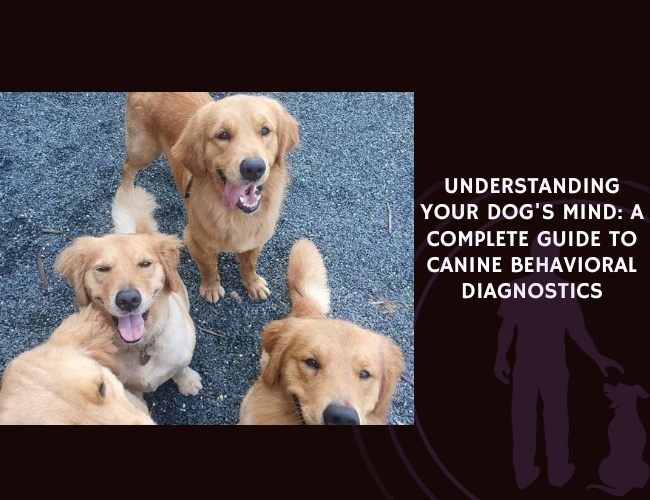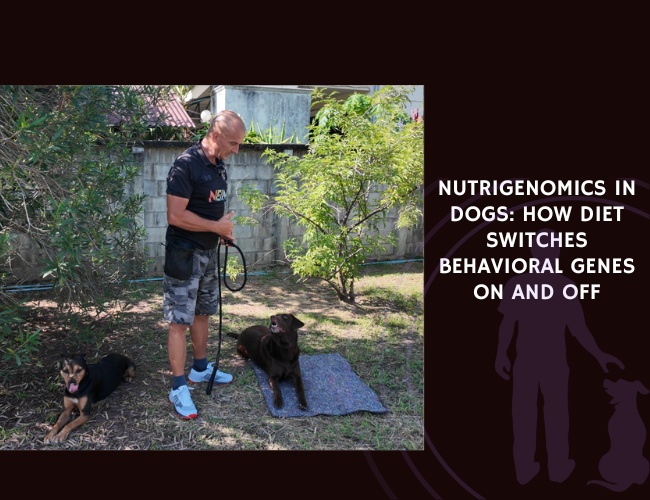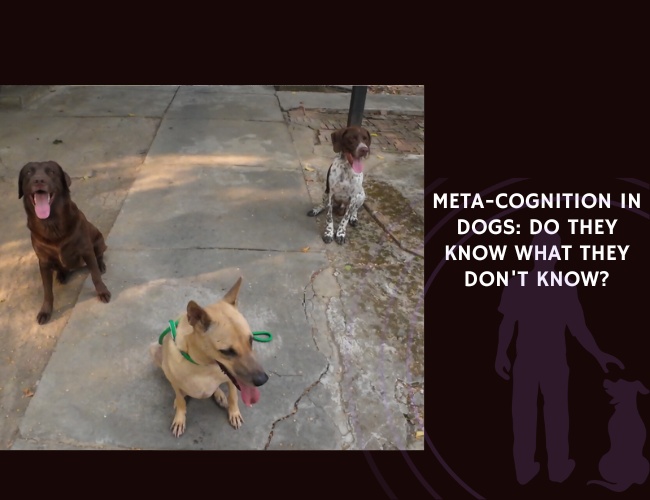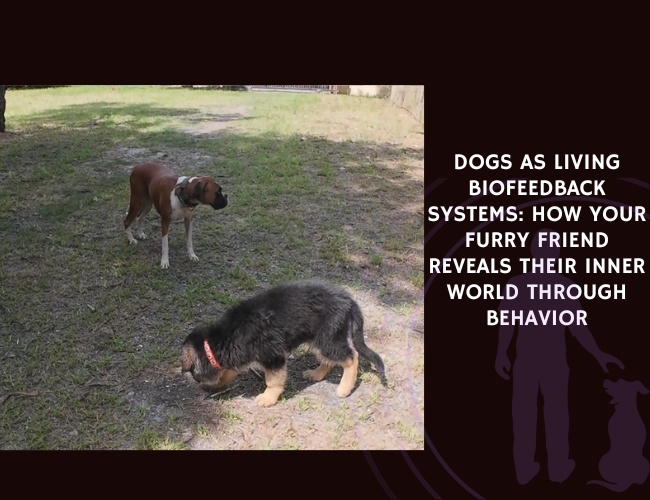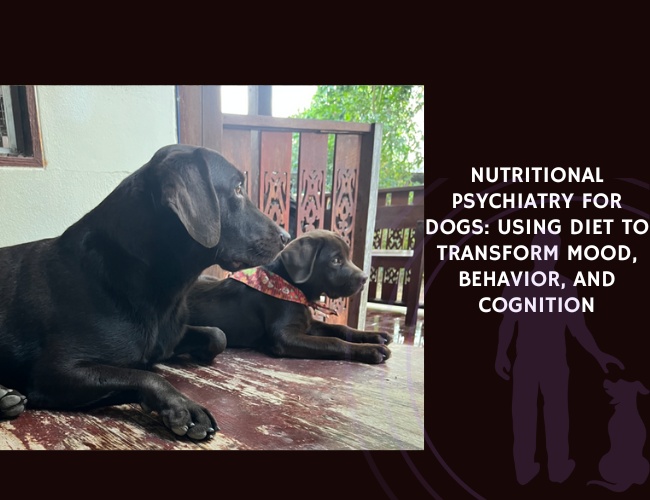Introduction: Beyond Simple Labels to True Understanding
Have you ever wondered what’s really going on in your furry friend’s mind when they exhibit puzzling behaviors? For too long, we’ve relied on simplistic labels like “aggressive” or “anxious” to describe complex canine behaviors. Today, let us guide you through a revolutionary approach to understanding your dog’s behavior—one that peels back the layers to reveal the true story behind every bark, growl, or nervous tail tuck.
Modern canine behavioral diagnostics represents a paradigm shift in how we understand our four-legged companions. By moving beyond surface-level symptoms to examine the intricate web of cognitive, emotional, physiological, and environmental factors that shape behavior, we can finally offer our dogs the understanding and support they truly deserve. This comprehensive approach not only transforms how we diagnose behavioral challenges but fundamentally changes how we strengthen the human-canine bond.
The Multi-Layered Approach to Understanding Behavior
Why Traditional Labels Fall Short
You might notice that when your dog displays concerning behaviors, well-meaning friends or even some professionals might quickly label them as “dominant,” “stubborn,” or “aggressive.” But these labels tell us nothing about what’s actually happening in your dog’s mind and body. They’re like calling a coughing person “noisy” without investigating whether they have allergies, a cold, or something more serious.
The problems with simple labels include:
- They focus on symptoms rather than causes
- They often lead to inappropriate interventions
- They can damage the human-dog relationship through misunderstanding
- They ignore the complex interplay of factors influencing behavior
Did you know that what appears as “aggression” might actually be pain-related defensive behavior? Or that “stubbornness” could be cognitive confusion or sensory processing differences? This is why we need a more sophisticated diagnostic framework—one that honors the complexity of canine consciousness.
The Scientific Foundation of Multi-Dimensional Assessment
Modern ethology and neuroscience have revealed that canine behavior emerges from multiple interconnected systems. Just as human behavior reflects our thoughts, feelings, physical state, and environment, your dog’s actions result from a similarly complex matrix of influences. By examining each layer systematically, we can build a comprehensive behavioral profile that guides truly effective interventions.
The revolutionary framework includes:
- Cognitive function assessment
- Emotional regulation evaluation
- Physiological contributor analysis
- Environmental and social context mapping
- Human-dog relationship dynamics
Cognitive Function: Your Dog’s Thinking Mind
Understanding Canine Intelligence Beyond “Smart” or “Slow”
When we explore your dog’s cognitive function, we’re examining far more than simple intelligence. We’re investigating how your furry friend processes information, makes decisions, and navigates their world mentally. This layer of assessment reveals crucial insights that often explain behaviors previously dismissed as “disobedience” or “defiance.”
Key cognitive components we assess:
- Impulse control capabilities: Your dog’s ability to pause before reacting
- Learning efficiency: How quickly and effectively new information is acquired
- Generalization skills: The capacity to apply learned behaviors across different contexts
- Problem-solving strategies: How your dog approaches novel challenges
Impulse Control: The Foundation of Good Behavior
You might notice that some dogs seem to think before they act, while others appear to be governed entirely by their immediate desires. This difference often comes down to impulse control—a cognitive skill that varies significantly between individuals and can be influenced by genetics, early development, and training history.
Signs of strong impulse control:
- Waiting patiently for meals despite hunger
- Resisting the urge to chase moving objects
- Maintaining focus despite distractions
- Showing self-regulation in exciting situations
Indicators of impulse control challenges:
- Inability to settle in stimulating environments
- Immediate reactions to triggers without apparent thought
- Difficulty with “wait” or “stay” commands even after extensive training
- Frequent jumping, mouthing, or other impulsive behaviors
Understanding your dog’s impulse control capacity helps us design training programs that work with, rather than against, their cognitive tendencies. For dogs with lower impulse control, we might need to break tasks into smaller steps and provide more immediate reinforcement.
Learning Ability and Cognitive Flexibility
Every dog learns differently, and recognizing these differences is crucial for effective training and behavior modification. Some dogs grasp new concepts quickly but struggle to adapt when contexts change. Others might take longer to learn initially but show remarkable flexibility once concepts are mastered.
Factors affecting learning ability:
- Breed-specific tendencies: Herding breeds often excel at pattern recognition
- Individual neurological differences: Just like humans, dogs have varying cognitive strengths
- Past experiences: Previous learning history shapes current capabilities
- Stress and emotional state: Anxiety can significantly impair learning
By assessing how your dog learns best, we can tailor training approaches to their unique cognitive profile, making the process more enjoyable and effective for everyone involved 🧡
Emotional Regulation: The Heart of Behavior
Mapping Your Dog’s Emotional Landscape
Your dog’s emotional world is rich, complex, and profoundly influences their behavior. When we assess emotional regulation, we’re not just looking at whether a dog seems “happy” or “sad”—we’re examining the intricate patterns of emotional response, recovery, and resilience that shape their daily experience.
Core emotional assessment areas:
- Baseline emotional states: Your dog’s typical mood in various contexts
- Emotional thresholds: How much stimulation triggers significant responses
- Recovery patterns: How quickly your dog returns to baseline after arousal
- Emotional flexibility: The ability to shift between emotional states appropriately
Understanding Emotional Baselines
Just as humans have different temperaments, dogs exhibit varying emotional baselines. Some dogs maintain a generally optimistic, exploratory attitude, while others tend toward caution or vigilance. Neither is inherently better—what matters is understanding your individual dog’s emotional starting point.
Optimistic baseline indicators:
- Tail held in relaxed, neutral position during rest
- Soft, open facial expressions
- Willingness to explore new environments
- Quick recovery from minor startles
Cautious baseline indicators:
- Tendency to observe before engaging
- Preference for familiar environments and routines
- More selective social interactions
- Heightened awareness of environmental changes
Recognizing your dog’s baseline helps distinguish between normal variability and concerning changes that might indicate stress, illness, or environmental problems.
Emotional Thresholds and Reactivity
You might notice that your dog can handle certain situations beautifully until they suddenly can’t. This tipping point represents their emotional threshold—the level of stimulation at which their coping mechanisms become overwhelmed. Understanding these thresholds is crucial for preventing behavioral incidents and building resilience.
Factors influencing emotional thresholds:
- Cumulative stress: Multiple minor stressors can lower thresholds
- Physical state: Hunger, fatigue, or pain reduce emotional resilience
- Past trauma: Previous negative experiences create lasting sensitivities
- Genetic predispositions: Some dogs are naturally more reactive
By carefully mapping your dog’s thresholds across different contexts, we can develop management strategies that keep them within their comfort zone while gradually building confidence 🐾

Physiological Contributors: The Body-Mind Connection
When Medical Meets Behavioral
One of the most critical aspects of modern behavioral diagnostics is recognizing how profoundly physical health influences behavior. Too often, dogs are labeled as “aggressive” or “anxious” when they’re actually experiencing pain, discomfort, or other medical issues that manifest behaviorally.
Key physiological factors to assess:
- Pain and discomfort: Often hidden but profoundly impactful
- Sensory changes: Vision or hearing loss can trigger defensive behaviors
- Metabolic imbalances: Thyroid issues, diabetes, and other conditions affect mood
- Gastrointestinal health: The gut-brain connection influences behavior
The Hidden Impact of Pain
Did you know that dogs are masters at hiding pain? This evolutionary trait, which helped their wild ancestors avoid appearing vulnerable to predators, means that pain often manifests as behavioral changes rather than obvious physical symptoms. A dog who suddenly becomes “grumpy” or “aggressive” might be experiencing arthritis, dental pain, or other discomfort.
Behavioral signs of potential pain:
- Increased irritability or aggression, especially when touched
- Reluctance to engage in previously enjoyed activities
- Changes in sleep patterns or restlessness
- Excessive licking or attention to specific body parts
- Sudden onset of house soiling in previously trained dogs
The Gut-Brain Axis: A New Frontier
Emerging research reveals fascinating connections between gut health and behavior. The microbiome—the collection of beneficial bacteria in your dog’s digestive system—communicates directly with the brain through multiple pathways, influencing mood, anxiety levels, and even cognitive function.
How gut health affects behavior:
- Neurotransmitter production: Many mood-regulating chemicals are produced in the gut
- Inflammation: Gut issues can trigger systemic inflammation affecting the brain
- Nutrient absorption: Poor gut health impairs absorption of behavior-critical nutrients
- Stress response: The gut-brain axis modulates stress hormone production
This understanding opens new avenues for behavioral intervention through dietary modifications, probiotic supplementation, and attention to digestive health as part of comprehensive behavioral treatment plans.
Environmental and Social Context: The World Your Dog Lives In
Creating Behavioral Maps of Daily Life
Your dog’s behavior doesn’t exist in a vacuum—it’s profoundly shaped by their environment and daily experiences. When we assess environmental and social context, we’re examining how the physical space, daily routines, and social interactions create the stage upon which behavior unfolds.
Environmental factors to evaluate:
- Physical space: Size, layout, and resources available
- Sensory environment: Noise levels, visual stimuli, scents
- Predictability: Consistency of routines and expectations
- Social dynamics: Relationships with humans and other animals
The Power of Predictable Routines
You might notice that your dog seems most relaxed when life follows predictable patterns. This isn’t just preference—it’s a fundamental need rooted in how canine brains process security and safety. Predictable routines reduce cognitive load, allowing dogs to conserve mental energy for learning and adaptation.
Benefits of structured routines:
- Reduced anxiety through predictability
- Improved learning through consistent contexts
- Better emotional regulation via reduced uncertainty
- Stronger human-dog bonds through reliable interactions
Signs your dog needs more routine:
- Excessive vigilance or inability to fully relax
- Difficulty settling at typical rest times
- Overreaction to minor schedule changes
- Increased attention-seeking or clingy behavior
Identifying and Managing Environmental Triggers
Every dog has specific environmental stimuli that challenge their coping abilities. These triggers might be obvious (like thunderstorms) or subtle (like specific scent combinations). Identifying and understanding these triggers allows us to develop targeted management strategies.
Common environmental triggers include:
- Auditory: Sirens, construction noise, specific vocal tones
- Visual: Fast movements, specific objects, light patterns
- Olfactory: Cleaning products, other animals’ scents, pheromones
- Spatial: Confined spaces, open areas, height changes
By creating detailed environmental maps, we can modify spaces to support emotional well-being and gradually desensitize dogs to unavoidable triggers 🧡
Perception. Pattern. Pressure.
Behaviour doesn’t exist in a vacuum.
Your dog’s daily actions are shaped by space, sound, rhythm, and routine. Mapping context means understanding which cues amplify fear, trigger joy, or create confusion.
The social web runs deep.
Household tension, conflicting signals, or unpredictable environments leave behavioural residues. Your dog reads not just your tone, but your inner state. Every interaction teaches something.



Change isn’t just external.
One shift in the home—schedule, smells, people—can rewire entire emotional pathways. Environmental diagnostics is not lifestyle advice. It’s the behavioural blueprint behind the bark.
Human-Dog Relationship Dynamics: The Dance of Connection
Understanding Attachment Patterns
The relationship between you and your dog forms the foundation of their emotional security and behavioral patterns. Just as human attachment styles influence our relationships throughout life, the quality of the human-dog bond profoundly affects canine behavior and well-being.
Secure attachment indicators:
- Dog seeks comfort from their human when stressed
- Confident exploration with periodic “check-ins”
- Calm greetings and departures
- Responsive to human emotional states without becoming overwhelmed
Insecure attachment patterns:
- Anxious attachment: Excessive clinging, separation distress
- Avoidant attachment: Limited seeking of comfort or interaction
- Disorganized attachment: Unpredictable responses to human presence
The Role of Communication Clarity
You might notice that some dogs seem to intuitively understand what their humans want, while others appear perpetually confused. This often reflects the clarity and consistency of human-dog communication rather than the dog’s intelligence or willingness to cooperate.
Elements of clear communication:
- Consistent verbal and body language cues
- Appropriate timing of reinforcement
- Recognition of species-specific communication styles
- Adjustment for individual dog’s learning patterns
Common communication breakdowns:
- Mixed signals between family members
- Unintentional reinforcement of unwanted behaviors
- Misreading of canine body language
- Expecting human-style reasoning from dogs
By improving communication clarity, we often see dramatic improvements in behavior without changing anything else about the training approach.
Reinforcement History: The Stories That Shape Behavior
Every interaction you’ve had with your dog contributes to their behavioral repertoire. Understanding reinforcement history—both intentional training and unintentional learning—helps explain current behavior patterns and guides effective modification strategies.
Analyzing reinforcement patterns:
- What behaviors have been consistently rewarded?
- Which unwanted behaviors might have been accidentally reinforced?
- How has punishment or correction been used, if at all?
- What environmental reinforcers exist beyond human control?
This historical perspective allows us to work with established patterns rather than against them, making behavior modification more efficient and less stressful for everyone involved 🐾
Diagnostic Tools and Methodologies
Building Comprehensive Behavioral Profiles
Creating an accurate multi-layered behavioral profile requires systematic assessment using validated tools and methodologies. Modern diagnostic approaches combine subjective observation with objective measurement, creating a complete picture of your dog’s behavioral patterns.
Essential diagnostic tools include:
- Standardized questionnaires: Validated instruments like C-BARQ
- Behavioral observation protocols: Structured assessment scenarios
- Physiological monitoring: Heart rate variability, cortisol sampling
- Environmental assessment tools: Space analysis, trigger identification
Structured Behavioral Questionnaires
You might wonder how questionnaires can reveal complex behavioral patterns. Well-designed instruments ask specific questions that, when analyzed together, reveal patterns invisible to casual observation. These tools help identify subtle behavioral tendencies and track changes over time.
What questionnaires assess:
- Behavioral responses across multiple contexts
- Intensity and frequency of specific behaviors
- Historical patterns and recent changes
- Human perceptions and management strategies
Longitudinal Observation: The Power of Time
Single observations provide snapshots, but behavior unfolds over time. Longitudinal observation—systematic recording of behavior across days, weeks, or months—reveals patterns, cycles, and gradual changes that might otherwise go unnoticed.
Effective observation strategies:
- Daily behavior logs with consistent categories
- Video recording for detailed analysis
- Environmental condition notation
- Correlation tracking between events and behaviors
Biometric and Movement Analysis
Modern technology offers unprecedented insights into canine behavior through objective measurement. Wearable sensors, movement tracking, and physiological monitoring provide data that helps distinguish between behavioral and medical issues.
Biometric indicators include:
- Heart rate variability: Stress and emotional regulation
- Activity patterns: Energy levels and rest quality
- Movement quality: Pain or neurological issues
- Sleep cycles: Overall well-being and recovery
These objective measures complement subjective observation, creating a more complete diagnostic picture.

Moving from Symptoms to Functions
The Revolutionary Shift in Behavioral Understanding
Traditional approaches often stop at describing what a dog does—barking, lunging, cowering. But understanding why they do it transforms our ability to help. Functional analysis examines the purpose behavior serves for the individual dog, revealing pathways to effective intervention.
Common behavioral functions:
- Distance-increasing: Creating space from perceived threats
- Distance-decreasing: Seeking social contact or resources
- Self-soothing: Managing internal emotional states
- Information-seeking: Investigating environmental uncertainties
Case Study: “Aggression” Redefined
Consider a dog who lunges and barks at other dogs during walks. Traditional labeling would call this “dog aggression.” But functional analysis might reveal:
- Function: Distance-increasing due to fear
- Trigger: Previous negative experience with similar-looking dogs
- Maintaining factors: Success in making other dogs go away
- Emotional component: High anxiety in social situations
This functional understanding leads to completely different intervention strategies than simply trying to suppress the “aggressive” behavior.
Predictive Patterns and Early Intervention
By understanding behavioral functions, we can identify early warning signs and intervene before problems escalate. This predictive approach reduces stress for both dogs and their humans while creating more positive learning experiences.
Early indicators to monitor:
- Subtle stress signals before major reactions
- Environmental factors that predict difficult days
- Physical positions that precede behavioral episodes
- Changes in routine behavior patterns
Clinical Applications and Intervention Design
From Diagnosis to Individualized Treatment
Once we’ve built a comprehensive behavioral profile, the real work begins: designing interventions that address root causes rather than just managing symptoms. This individualized approach ensures that each dog receives support tailored to their unique needs.
Intervention design principles:
- Address underlying causes, not just visible behaviors
- Work within the dog’s current capabilities
- Modify environment before attempting behavior change
- Support the human-dog relationship throughout
Multi-Modal Intervention Strategies
Effective behavioral treatment rarely involves a single approach. Instead, successful interventions typically combine multiple strategies addressing different layers of the behavioral profile.
Integrated intervention components:
- Environmental management: Reducing triggers and stressors
- Behavioral modification: Systematic training protocols
- Medical support: Addressing pain, anxiety, or other health issues
- Nutritional optimization: Supporting gut-brain health
- Relationship enhancement: Improving human-dog communication
Measuring Progress Beyond “Fixed”
You might expect behavioral intervention to result in a “cured” dog, but realistic progress often looks different. By establishing clear, measurable goals based on functional improvement rather than symptom elimination, we create achievable milestones that build success.
Meaningful progress indicators:
- Increased time between reactive episodes
- Faster recovery from triggering events
- Expanded comfortable environments
- Improved communication with humans
- Enhanced quality of life measures
Ethical Considerations in Behavioral Diagnostics
Avoiding Harmful Labels and Interventions
The way we conceptualize behavior profoundly influences how we treat our dogs. Moving beyond judgmental labels like “dominant” or “stubborn” isn’t just scientifically accurate—it’s ethically essential for promoting welfare-focused interventions.
Ethical diagnostic principles:
- Assume medical causes until proven otherwise
- Respect species-specific needs and communication
- Avoid anthropomorphic interpretations
- Prioritize welfare over human convenience
Supporting Guardian Well-being
Did you know that living with a dog experiencing behavioral challenges can significantly impact human mental health? Ethical behavioral diagnostics recognizes this reality and includes support for human family members as part of comprehensive treatment.
Supporting overwhelmed guardians:
- Providing realistic timelines and expectations
- Offering emotional support without judgment
- Creating management strategies that work for the whole family
- Celebrating small victories along the journey
The Right to Behavioral Healthcare
Every dog deserves access to qualified behavioral support, just as they deserve veterinary care for physical ailments. This perspective shift—from viewing behavior problems as training failures to recognizing them as health issues—transforms how we approach diagnosis and treatment.
Practical Implementation Guide
Getting Started with Multi-Layered Assessment
You might feel overwhelmed by the complexity of comprehensive behavioral assessment, but the process can begin simply. Starting with basic observation and gradually adding layers creates a manageable path toward understanding your dog’s behavior.
First steps to take:
- Begin a daily behavior journal noting patterns
- Schedule a comprehensive veterinary examination
- Document environmental factors and daily routines
- Seek qualified professional behavioral support
Finding Qualified Professional Support
Not all behavioral professionals use multi-layered diagnostic approaches. When seeking help, look for practitioners who demonstrate understanding of the interconnected nature of behavior and health.
Questions to ask potential professionals:
- How do you assess for medical contributions to behavior?
- What tools do you use for behavioral assessment?
- How do you involve veterinary professionals in your process?
- What is your approach to medication versus behavior modification?
Creating Your Dog’s Behavioral Profile
Building your dog’s profile is an ongoing process that deepens your understanding and strengthens your relationship. Even without professional support, you can begin gathering valuable information.
DIY profile components:
- Behavioral diary: Daily notes on patterns and triggers
- Video library: Short clips of typical and concerning behaviors
- Environmental inventory: Detailed assessment of living spaces
- Health timeline: Medical history and behavioral correlations
The Future of Canine Behavioral Understanding
Emerging Technologies and Insights
The field of canine behavioral diagnostics continues to evolve rapidly. New technologies and research insights promise even more sophisticated understanding of our dogs’ inner lives.
Exciting developments include:
- Advanced brain imaging revealing canine emotional processing
- Genetic testing for behavioral predispositions
- AI-assisted behavior pattern recognition
- Microbiome analysis for behavior prediction
Integration with Veterinary Medicine
The artificial separation between behavioral and medical care is dissolving as we recognize their interconnection. Future diagnostic approaches will likely involve seamless collaboration between behavioral and veterinary professionals.
Integrated care benefits:
- Earlier identification of medical contributors
- More comprehensive treatment planning
- Better outcomes through coordinated care
- Reduced stress through unified approaches
Conclusion: A New Era of Understanding
As we conclude this journey through the landscape of canine behavioral diagnostics, you might notice that your perspective on your dog’s behavior has shifted. No longer are we limited to superficial labels or quick fixes. Instead, we have the tools to truly understand the complex, beautiful minds of our canine companions.
This multi-layered approach to behavioral diagnostics represents more than scientific advancement—it’s a fundamental shift in how we honor the human-dog relationship. By recognizing the cognitive, emotional, physiological, and social factors that shape behavior, we can provide our dogs with the understanding and support they deserve.
Is this approach right for you and your dog? If you’re ready to move beyond quick fixes to deep understanding, if you believe your dog deserves the same comprehensive healthcare we expect for ourselves, and if you’re willing to see behavior as communication rather than defiance, then multi-layered behavioral diagnostics offers a path forward.
Remember, every dog is an individual with their own story, strengths, and challenges. By taking the time to build comprehensive behavioral profiles, we don’t just solve problems—we deepen bonds, prevent suffering, and create lives of mutual understanding and joy. Your furry friend is counting on you to see beyond the surface, to understand their whole being, and to advocate for their complete well-being. Together, we can create a world where every dog is understood, supported, and cherished for exactly who they are 🧡🐾

